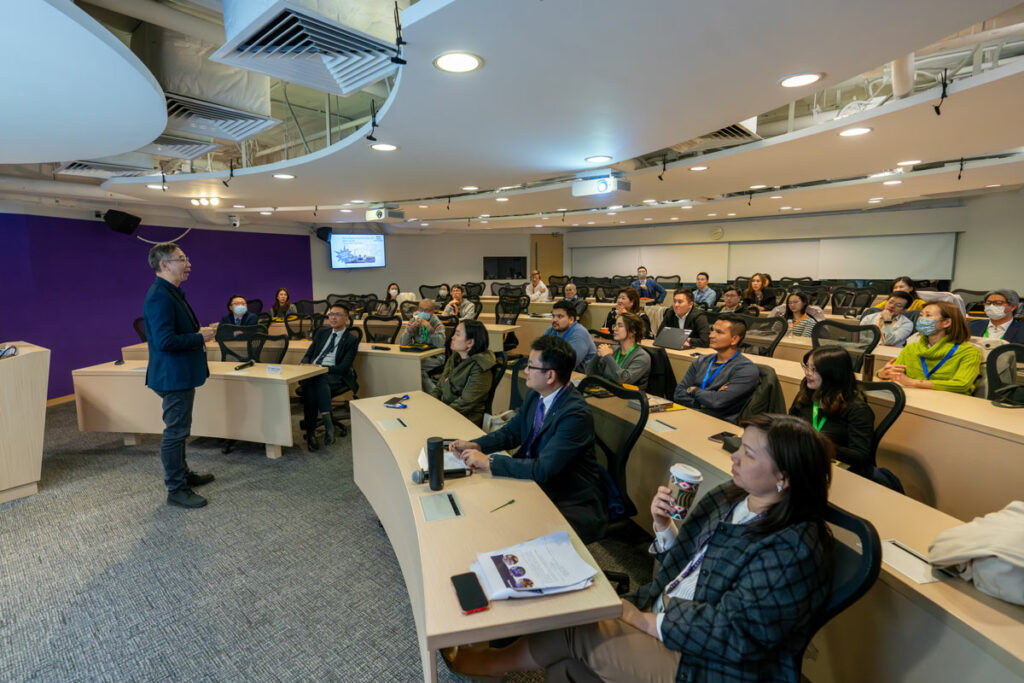Sustaining a company in the sustainable economy


Green government measures such as carbon taxes are set to put an increasing strain on corporate profits. So what’s the best way for companies to stay competitive while navigating the green new normal?
As our world inexorably heats up under the influence of climate change, governments are scrambling to take measures that will arrest the warming and lead us towards a more sustainable future. However, those mitigations, such as carbon taxes, threaten to impose significant costs on businesses.
Attendees at a CUHK EMBA Master Class on 18 December 2023, Survivability of Your Company in the Green Economy, learned what companies can do about that. The Master Class was presented by Adjunct Professor Wilton Chau, who has over 30 years of business experience as a venture specialist, is a former head of Singapore Government-linked VC operation in North Asia and is currently the founding chairman of non-profit oriented venture investment platform PAVD and the sole independent director of a global clean energy giant China Three Gorges International, among many other roles.
While the green economy is helping to save the world, said Professor Chau, it will also inevitably kill companies. From a huge, middle-income economy like China to a small, highly developed economy like Singapore, the spectre of growing carbon taxes is looming. In fact, he claimed, the global carbon/clean taxes are soon going to be companies’ second largest, or at least one of the major operating costs in near future.
Although, as of 2019, China was the world’s biggest greenhouse gas emitter, accounting for about 27% of global emissions, it’s also one of the most aggressive countries in green and sustainability such as promoting the carbon tax. Why?


China: the new green giant
After the signing of the Kyoto Protocol in 1997, committing governments around the world to reducing their emissions, said Professor Chau, China took the view that the green economy was here to stay, and that the country needed to act fast to stay ahead of it. As a result, it moved very aggressively in clean energy – the energy sector accounts for about 20% of global greenhouse gas emissions – building highly efficient power plants in a variety of renewable sectors and developing the technology to transmit energy over long distances. That allows it to supply other countries – Vietnam, for example, imports 2bn kWh of power from China a year – providing China with opportunities to maintain friendly environment with surrounding countries by supplying them electricity and/or green energy. With the ample supply in clean energy, it could also be an effective way to go against de-coupling, such as preventing certain productions moving to countries like India and Vietnam.
This is an explicit part of China’s national strategy, added Professor Chau: President Xi Jinping stated at a 2018 Apec meeting that green energy was a priority for the future, for instance, while the nation announced in 2021 that it would stop financing new coal-fired power plants overseas. That being the case, every company that wants to flourish in this part of the world needs to ingrain sustainability into its strategy.
The Lion City’s tax bombshell
Small, green, streamlined Singapore might have an entirely different set of circumstances, but its government is equally keen on carbon taxes, having introduced one in 2019. It currently stands at $5 per metric ton, rising to $25 in 2024, $45 in 2026 – and either $50 or $80 in 2028. So if a company produces five million metric tons of carbon dioxide, it pays $25 million now (2023), potentially rising to anything up to $400 million within five years. As a result, a global energy giant has had to sell its refinery operation in Singapore, which was facing a potential tax bill of US$1 billion – in other words, it’s been carbon-taxed out of existence.
Usually countries want to attract big companies to contribute to their economies, so why would Singapore want to reduce its business attractiveness to MNCs. The answer, said Professor Chau, is that carbon taxes are effectively global rather than local. The European Union’s Carbon Border Adjustment Mechanism, for example, means that taxes are payable for the carbon embedded in goods imported into the region, which companies need to report, with mitigation for those that can prove carbon taxes have already been paid on those goods elsewhere.




This changes everything
In other words, even though Hong Kong has no carbon tax, its companies are still affected. In 2020, the SAR produced 33.8 million metric tons of carbon dioxide, the most significant greenhouse gas, with the transportation sector particularly culpable. The government is struggling to find solutions, said Professor Chau, particularly given its reliance on two energy companies that themselves rely on fossil fuels.
That puts the onus on individual companies, who need to reduce their own carbon footprint, by operating more efficiently and lowering their energy use, and potentially also by purchasing carbon credits – not just because it’s the right thing to do, but also because it will put them in a stronger position in the future where carbon tax liabilities are concerned. In other words, companies need to understand that the green economy involves a paradigm shift – and they need to adjust fast. The EMBA Program of CUHK could be the first graduate program in Hong Kong, emphasising on experiential learning in clean energy and sustainability, conducted by instructor who has significant global exposure in this area.

